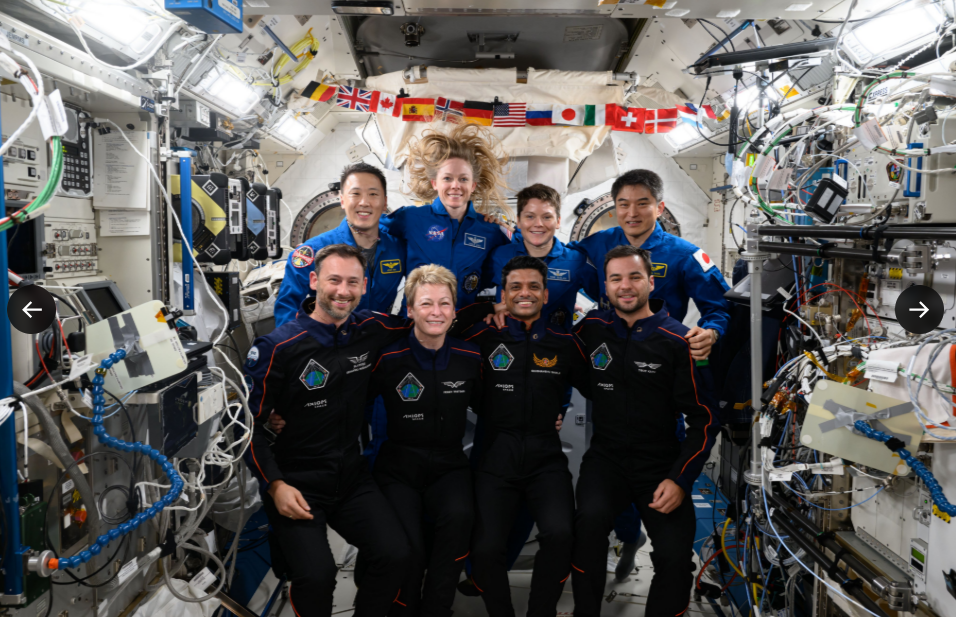Countdown Begins: Shubhanshu Shukla’s Dragon Capsule Approaches Earth at 28,000 kmph, Touchdown Expected Today
After an intense space expedition, Indian astronaut Shubhanshu Shukla and his Axiom-4 crew are racing back to Earth aboard SpaceX’s Dragon spacecraft. The capsule, nicknamed “Grace,” is currently hurtling towards the planet at an extraordinary speed of 28,000 kilometers per hour. After successfully detaching from the International Space Station (ISS) nearly 18 days post-launch, the mission is now approaching its final and most critical stage—reentry and splashdown.
The entire nation is holding its breath as Shubhanshu Shukla’s return marks a proud and emotional moment for India. Meanwhile, all eyes at NASA and SpaceX’s mission control remain glued to the spacecraft’s telemetry, ensuring every step of the descent is closely monitored.
However, despite the excitement, the mission’s final leg is not without concern. A number of risks continue to loom large, from technical glitches to unpredictable weather conditions, which could potentially delay or complicate the capsule’s safe return.
Dragon and the @Axiom_Space Ax-4 crew are on track to reenter Earth’s atmosphere and splash down off the coast of San Diego at ~2:31 a.m. PT tomorrow.
Dragon will also announce its arrival with a brief sonic boom prior to splashing down in the Pacific Ocean pic.twitter.com/dS3KuHVWdH
— SpaceX (@SpaceX) July 15, 2025
Technical Troubles Marked the Mission’s Start
The Axiom-4 mission faced challenges right from the launch pad. Initially, a liquid oxygen leak was detected in the Falcon 9 rocket, raising early alarms. Later, minor malfunctions were reported in the onboard systems of the Dragon capsule. Although these issues were resolved in time for a successful journey to the ISS, they highlighted the mission’s vulnerability—especially when dealing with human spaceflight.
Moreover, environmental factors have continued to test the mission’s resilience. Spacecraft reentry is notoriously risky, with historical incidents casting a long shadow. In 2003, the tragic Columbia shuttle disaster occurred just 15 minutes before its scheduled landing. Similarly, astronaut Sunita Williams once had to remain in space for months due to technical issues preventing a safe return. These precedents are a stark reminder of the risks involved in reentry operations.
Reentry at Hypersonic Speed—Slowing Down Just in Time
As of now, the Dragon capsule is cruising at a staggering 28,000 kmph. As it nears Earth’s atmosphere, onboard thrusters and heat shield systems will begin to slow the spacecraft dramatically to ensure a safe landing. The capsule’s thermal protection system, or heat shield, is currently enduring temperatures of up to 2,000 degrees Celsius as it prepares for atmospheric entry.
This intense heat is a result of the friction between the spacecraft and Earth’s atmosphere. The spacecraft must survive this extreme environment without compromising the safety of the crew. Fortunately, the Dragon capsule is equipped with state-of-the-art safety and navigation systems designed for precisely this kind of scenario.
All Eyes on Florida’s Coast for Splashdown
The capsule is scheduled to make its final descent off the coast of Florida, in the Atlantic Ocean, where it will perform a “soft splashdown.” This term refers to a controlled water landing, designed to minimize impact forces and ensure crew safety.
However, weather remains a wildcard. The European Space Agency has warned that heavy winds, rainfall, or even potential storms in the region could pose serious threats to the landing timeline. Mission planners are constantly evaluating weather data and may adjust the splashdown schedule or location accordingly if conditions worsen.
A Nation Watches, a Mission Nears Completion
Back in India, citizens are united in anticipation as Shubhanshu Shukla prepares to return from a mission that symbolizes the country’s growing role in global space exploration. The Axiom-4 mission has not only extended scientific cooperation among international space agencies but has also become a source of inspiration for aspiring astronauts and researchers across India.
As the final countdown ticks on, the success of this mission will hinge on flawless coordination between space agencies, real-time data monitoring, and a bit of favor from nature. If all goes according to plan, today will mark a triumphant return for Shubhanshu Shukla and the Axiom-4 crew—sealing their legacy in the annals of space exploration.








